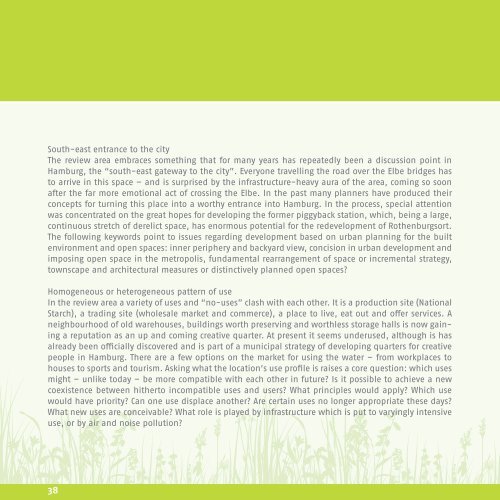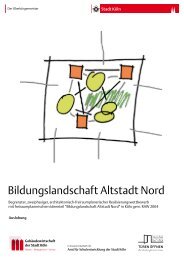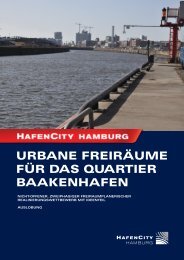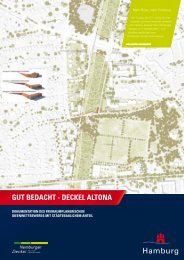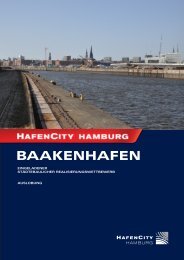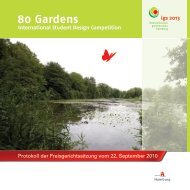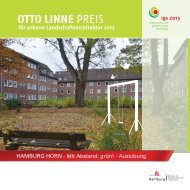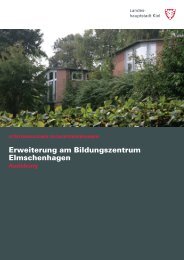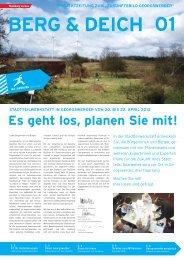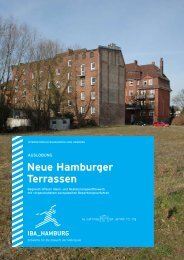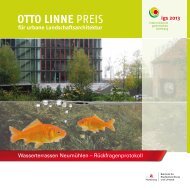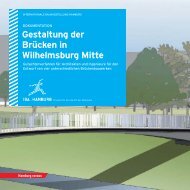OTTO LINNE PREIS - luchterhandt
OTTO LINNE PREIS - luchterhandt
OTTO LINNE PREIS - luchterhandt
Create successful ePaper yourself
Turn your PDF publications into a flip-book with our unique Google optimized e-Paper software.
South-east entrance to the city<br />
The review area embraces something that for many years has repeatedly been a discussion point in<br />
Hamburg, the “south-east gateway to the city”. Everyone travelling the road over the Elbe bridges has<br />
to arrive in this space – and is surprised by the infrastructure-heavy aura of the area, coming so soon<br />
after the far more emotional act of crossing the Elbe. In the past many planners have produced their<br />
concepts for turning this place into a worthy entrance into Hamburg. In the process, special attention<br />
was concentrated on the great hopes for developing the former piggyback station, which, being a large,<br />
continuous stretch of derelict space, has enormous potential for the redevelopment of Rothenburgsort.<br />
The following keywords point to issues regarding development based on urban planning for the built<br />
environment and open spaces: inner periphery and backyard view, concision in urban development and<br />
imposing open space in the metropolis, fundamental rearrangement of space or incremental strategy,<br />
townscape and architectural measures or distinctively planned open spaces?<br />
Homogeneous or heterogeneous pattern of use<br />
In the review area a variety of uses and “no-uses” clash with each other. It is a production site (National<br />
Starch), a trading site (wholesale market and commerce), a place to live, eat out and offer services. A<br />
neighbourhood of old warehouses, buildings worth preserving and worthless storage halls is now gaining<br />
a reputation as an up and coming creative quarter. At present it seems underused, although is has<br />
already been officially discovered and is part of a municipal strategy of developing quarters for creative<br />
people in Hamburg. There are a few options on the market for using the water – from workplaces to<br />
houses to sports and tourism. Asking what the location’s use profile is raises a core question: which uses<br />
might – unlike today – be more compatible with each other in future? Is it possible to achieve a new<br />
coexistence between hitherto incompatible uses and users? What principles would apply? Which use<br />
would have priority? Can one use displace another? Are certain uses no longer appropriate these days?<br />
What new uses are conceivable? What role is played by infrastructure which is put to varyingly intensive<br />
use, or by air and noise pollution?<br />
38


